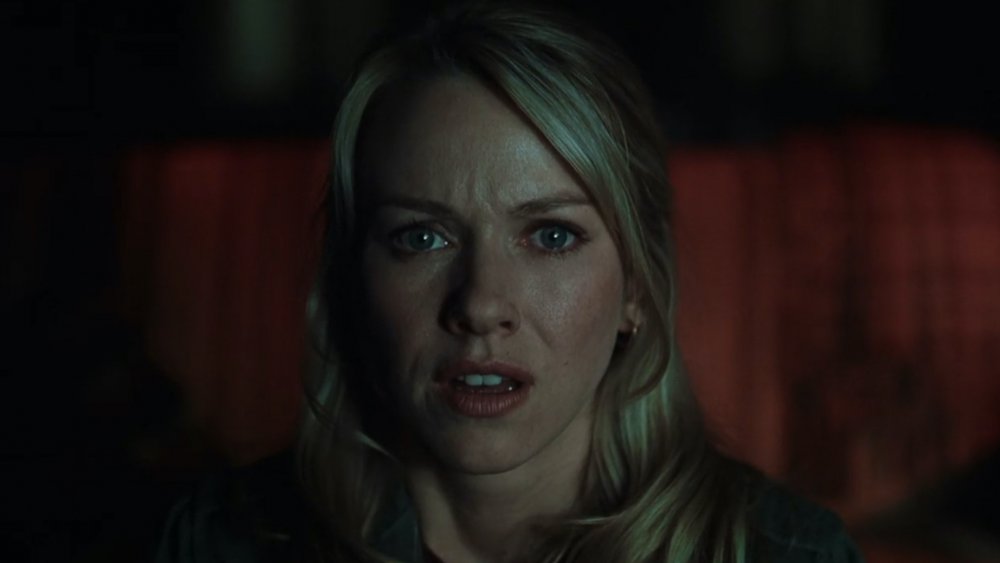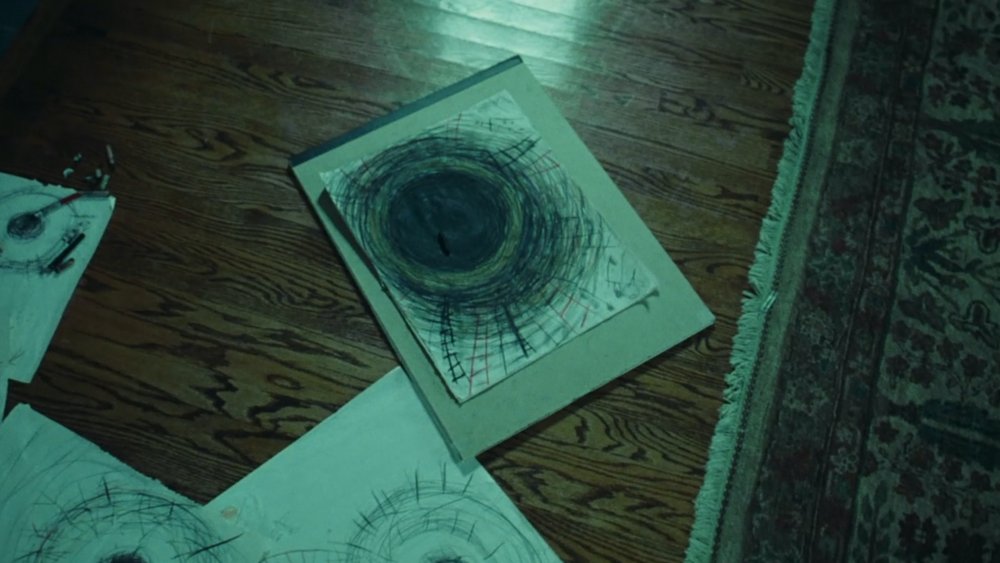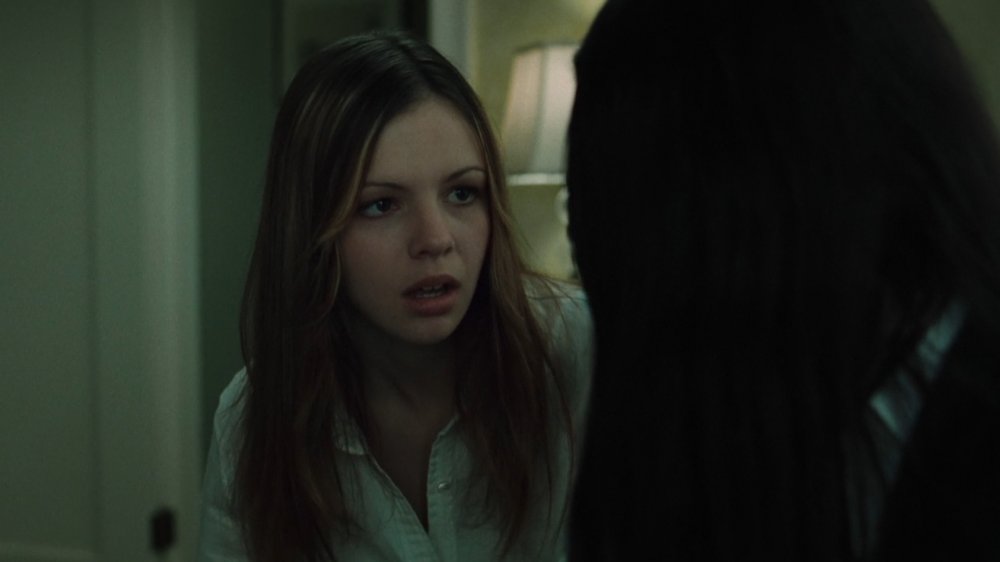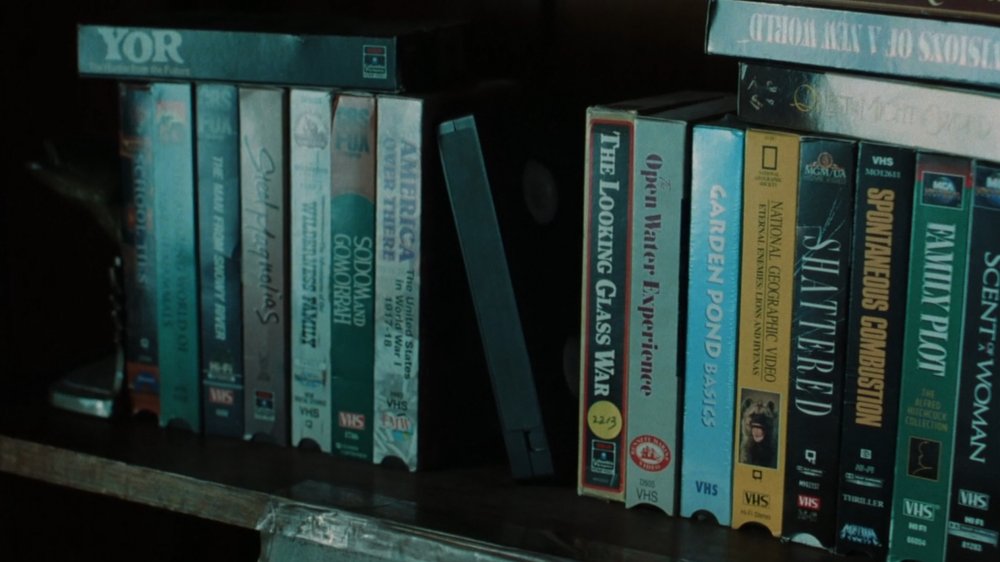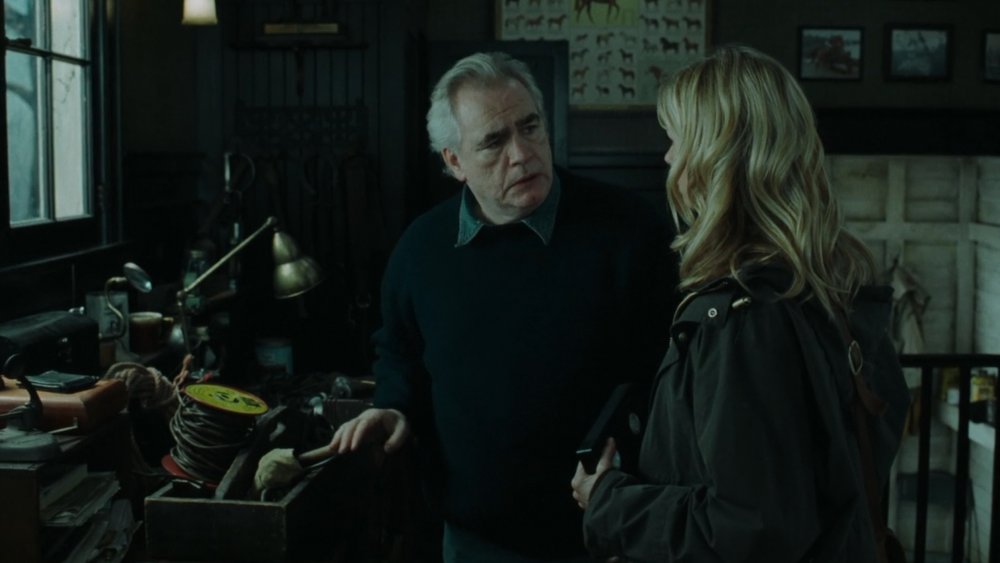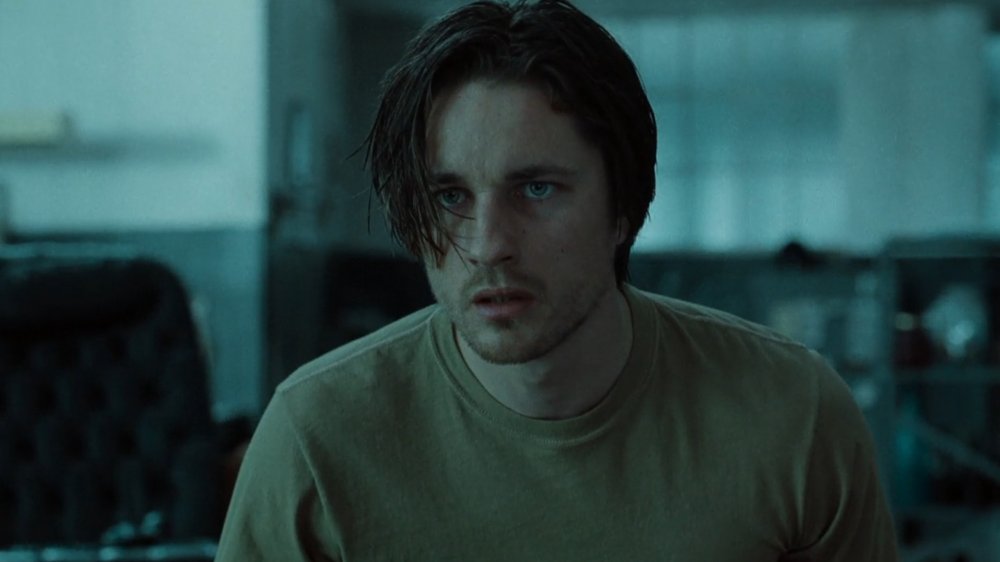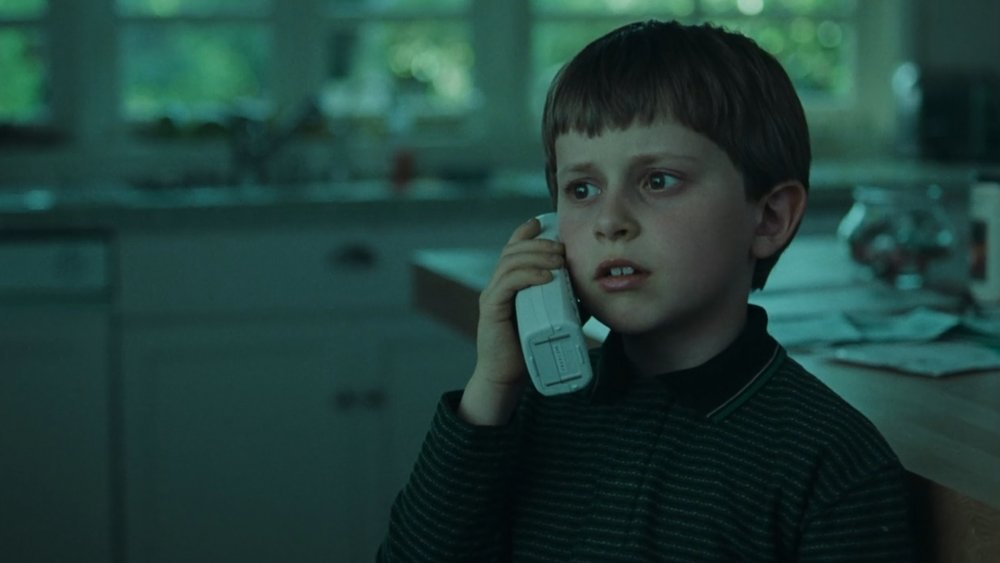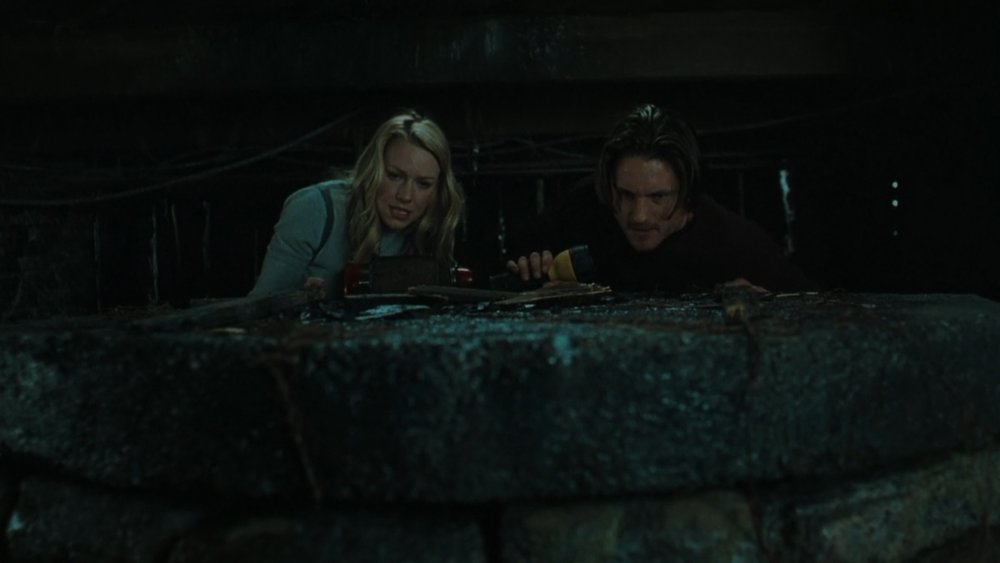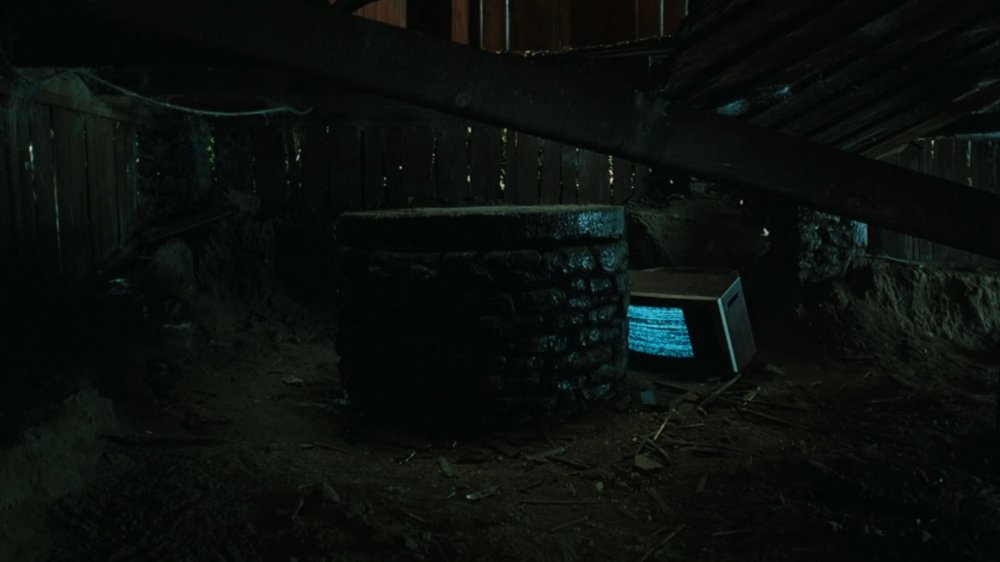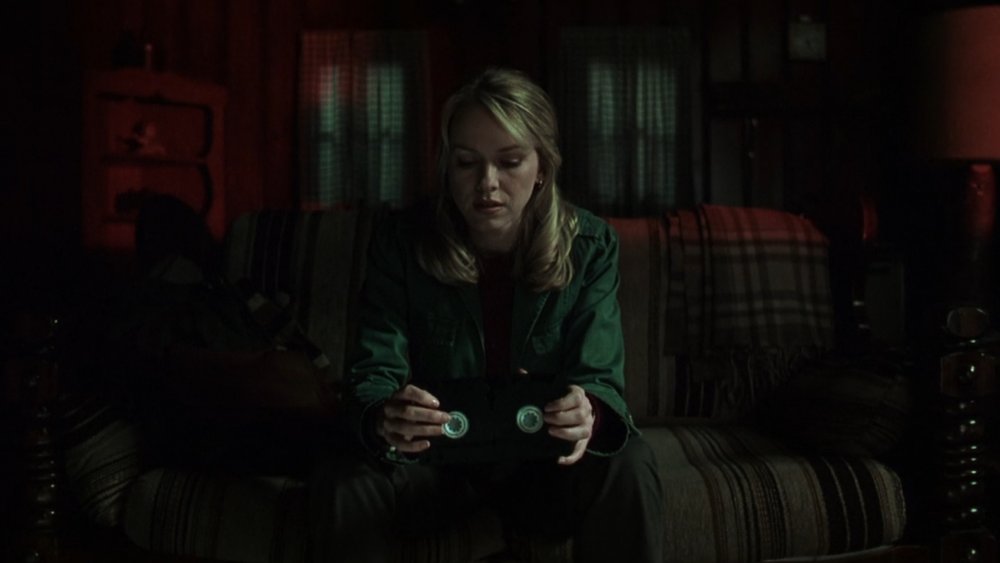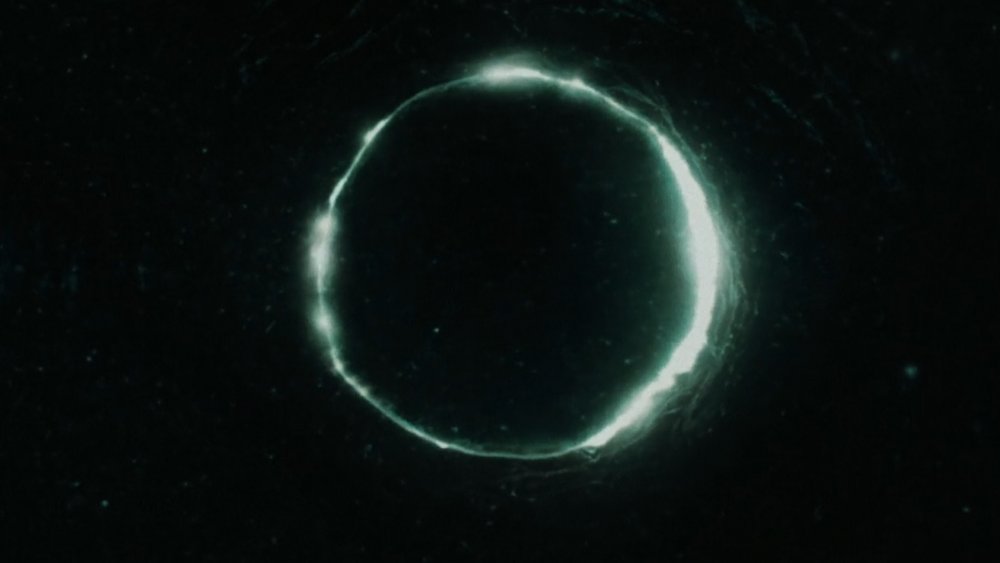The End Of The Ring Explained
Many horror movies lose their magic over the years, falling victim to outdated special effects, odd acting choices, and aesthetic changes. Decades after its debut, however, The Ring remains one of the most terrifying movies of all time, just as effective now as it was when it first hit theaters. That's thanks to its combination of horror thrills and psychological depth — plus, you know, the indelible image of Samara crawling out of a TV set.
The Ring is about many things, its iconic cursed videotape being only the tip of its dark iceberg. It's about an old-school reporter, Rachel Keller, asking tough questions no one wants to help her answer. It's about a murdered girl, Samara, who might just be evil incarnate. And it's about cruelty, above all — the sort that echoes through generations, long after its perpetrators have been buried.
What makes The Ring revolutionary to this day, though, is its ending. Dropping a truly shocking twist without losing form is a skill — one mimicked for many years after The Ring's success. For those who didn't completely understand it, here is the ending of The Ring, explained.
A brief background of The Ring
It's important to note that The Ring is a remake of the 1998 Japanese release Ringu, which is an adaptation of Koji Suzuki's 1991 novel The Ring. We're not trying to ruin anyone's sleeping habits, but we should probably also mention that Samara — you know, the creepy girl who climbs out of TV screens, teleports to her victims, and curses videotapes — was inspired by a real person.
Specifically, Samara was inspired by Tomokichi Fukurai's experiments. Fukurai, an assistant professor of psychology at Tokyo University, investigated something called thoughtography, which is the claimed ability to psychically project or "burn" images and ideas from a person's mind onto surfaces, the minds of others, and even onto film — basically, Samara's powers in The Ring. Two women, Chizuko Mifune and Sadako Takahashi, were studied by Fukurai, claiming they could use this mind-bending power. Real or not, Fukurai believed them, and his work became a springboard for Suzuki, the creators of Ringu, and finally, the filmmakers of The Ring. So the next time someone tells you The Ring isn't scary, tell that person Samara is inspired by a real person and casually walk away.
How did Aidan know so much?
Rachel's son, Aidan Keller, draws disturbing pictures of his cousin just before she dies. How did he know his cousin was in danger? How did he know so much about Samara? Why do children always know so much about the ghost or spirit in horror films yet refuse to tell anyone until it's too late?
While it's not directly stated, Samara was likely already communicating with Aidan before his mom knew about her or her cursed, murderous tape. The only other explanation is that he is also telepathic, and was unintentionally tapping into psychic wavelengths. Whatever the case, in the biggest twist of the movie, he becomes anxious when Rachel tells him she set Samara free and buried her corpse. He knows that was a mistake and that he's still cursed because he was talking to Samara the entire time. Aidan's mediumship is a grey area in the film, as unknowable as it is useful — and pretty darn scary on its own.
Who started the videotape nightmare?
At some point, Samara created the first cursed videotape using her fearsome powers. The tape was located at the Shelter Mountain Inn, near Samara's final resting spot beneath the floor of the campsite's Cabin 12. The tape had presumably been sitting on the shelf in the lobby until Katie Embry (the girl who dies at the beginning of the movie) and her friend watch it in the cabin and are subsequently murdered and traumatized, respectively. This tragic event gets the attention of prime-time investigator Rachel, starting the seven-day cycle anew with her, her son, and her ex-husband Noah Clay.
So who put the videotape there in the first place? A case can be made that Samara's father, Richard Morgan, placed the tape on the shelf in the lobby of the Shelter Mountain Inn. This seems a bit of a stretch –isn't it too convenient that the tape is near Samara and the well? Then again, why does Samara let her father live in the first place? Possibly because he played a role in making the tape and/or placing it at the campsite. She might have left him alive, but forcing him into her bidding might have been torture enough.
Why now, Richard Morgan?
Richard Morgan, Samara's father, electrocutes himself halfway through the movie. Why then? Theories abound, one in particular emerging above the rest: If you believe he somehow played a role in the tape, perhaps he feels guilty.
Richard had to know something about the tape. After all, he asks Rachel if the tape she shows him is the only one, which is an odd question to ask if he didn't have any prior knowledge of the tape's curse or existence. His reaction says it all as he dismisses Rachel upon finding out she made a copy. There's also a theory that he watched the tape and killed himself before his daughter could kill him — but when and how did he get the tape?
It's also peculiar that Richard told Rachel that reporters take tragedy and force the world to experience it, spreading it like a sickness. Samara's death at the hands of her mother was truly a tragedy, and the tape is a plague unto itself, passing from person to person. Moreover, in the book, the tape's curse is a mutated smallpox virus. All of this indicates Richard's complex feelings on the subject ... but doesn't reveal much in the way of concrete answers.
Alas, poor Noah
Noah plays an integral role in solving the cursed tape mystery. He investigates the tape's contents, carves up the floor hiding the well with an ax, and helps push the top of the well off, revealing Samara's body. But, unfortunately for the man with a sweet bachelor pad, he doesn't manage to spread the message of the cursed tape, an act that would have protected him from Samara's rage. All he does is help Rachel and Rachel alone, spreading the news of Samara's curse no further. His technological know-how does not matter — what can man's gadgetry do against primordial evil?
Noah's is perhaps the most tragic death of The Ring, and the moment at which the horror story's dark heart comes most fully into view. Noah does nothing wrong — in fact, he does a lot right. It doesn't matter. If a vengeful ghost wants to kill you for disobeying her rules, she can — and will.
Why Rachel and Aidan were spared
Without Noah's help, Rachel probably wouldn't have solved the videotape mystery by herself. Unfortunately, Rachel creates a copy of the cursed tape Noah subsequently watches. She thinks she is spared because she sets Samara's corpse and story free, but the real reason is that she spreads Samara's curse to Noah.
As for Aidan? He knows this already, and drops the ultimate twist by telling his mom she wasn't supposed to free Samara. That's when the audience finds out the curse and seven-day death cycle is still on. In response, Rachel goes to Noah's apartment and finds him already dead. Grasping the mechanics of the curse, she then has Aidan create a copy of the tape to keep him alive, and it works like a charm. Samara doesn't kill people who help spread her message.
Without Aidan's connection, Rachel likely wouldn't have known Noah was killed until at least a couple of days later, depending on how fast his death hit the media. And she certainly wouldn't have known how to keep her son safe. But the question lingers, horrifyingly, over the ending — who will she show the new tape to? Who will she condemn to death, in place of her son?
All of the characters are Samara's pawns
While Rachel is an intrepid reporter who stops at nothing in her pursuit of the truth, the character's skills don't really matter in the grand scheme of things. If Rachel hadn't made copies and spread the curse, Samara would have waited for another hapless adult or group of mischievous teenagers to come along. Everyone, from Noah to Aidan to Rachel, is a pawn. Samara is always two moves ahead, ready to carry out her vengeance once the seven-day cycle concluded. Samara looks at the chess match she and Rachel are playing from above, while Rachel can only see what is in front of her until it is too late.
The plot of The Ring is a perfect storm, in that sense. Rachel's niece dies, her death doesn't sit right or cause much of a stir, Rachel's rightfully disgruntled sister asks Rachel to investigate what really happened. She could have been a lunch lady with a passion for Murder, She Wrote, a housewife, or a microbiologist — it wouldn't have changed anything. Samara was winning from the beginning.
The truth about Samara
As clues are uncovered, it appears Samara wants someone to find out that her mom killed her by suffocation, topped off by tossing her down a well. All of these clues create a path of sympathy for Samara, as well as anger toward her parents as Rachel, Noah, and the audience start to believe Samara's parents abused her. After all, Samara's father forced her to live in a horse barn, and a tape of Samara in psychotherapy shows a girl with no control over her powers. It seems straightforward.
But Samara, as her father tells Rachel, is evil. What she really wants is to kill people, which is why she cursed the tape in the first place. It takes seven days because that's the amount of time it took her to die in the well after her mother pushed her — a tragic detail to be certain, but make no mistake: Samara is cruelty incarnate.
Rachel and the audience only see what they want to see: A little girl lost, in need of rescue. But in life, Samara was the sort of kid who used psychic powers at an early age to harm horses. She's not going on a killing spree because her mom killed her and her parents covered up her death — she's wicked because she was born that way.
Why tapes?
Samara curses tapes, but the tapes aren't the important part. Samara would have found another avenue to kill people if she'd needed to: DVDs, smartphones, possibly even digital media. In fact, Samara in the modern day would be even more destructive.
Think about it: Samara sends a link to a cursed video which is then sent to friends and friends of friends. The video is removed on social media platforms, but not before someone makes a copy and continues to post it on the same platform or different sites. In this age of instant gratification, how many people would click on that link? Dark rumors about its contents would, if anything, speed its spread. The internet has plenty of dark corners, full of macabre thrill-seekers.
But no matter the time period, Samara can simply burn images into people's minds instantaneously. She gets people to see what she wants them to see and torments them, hence Katie's magazine images being deformed. Tapes are more effective and wide-spreading and also force others to play a role in her killings, but she doesn't need them to cause harm. Now that's a villain.
The Ring's legacy
The Ring's massive success paved the way for English-language remakes of Asian horror films. The Grudge, One Missed Call, and Pulse are just some of the movies that were inspired by The Ring's success. Of course, The Ring is also the first installment of the American Ring trilogy, with The Ring Two and Rings taking place after it.
The Ring, simply put, was well-received, managing to be a box office hit and a critical success. It triumphs because it doesn't rely on typical horror thrills, such as jacking up the suspense with volume or jump scares where the killer appears out of nowhere. The Ring is more about mind games, cycles of violence, and the immortal problem of evil.
The Ring was groundbreaking and opened the door to a whole new type of scary movie. For that, Samara will forever go down in history as one of the best horror villains of all time.
